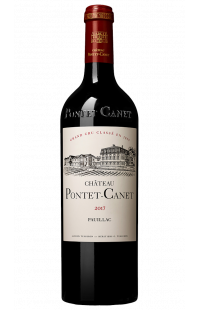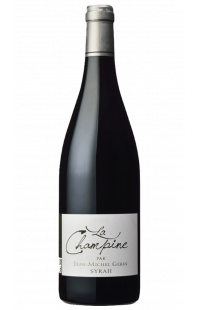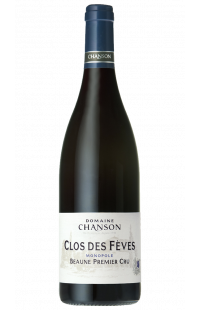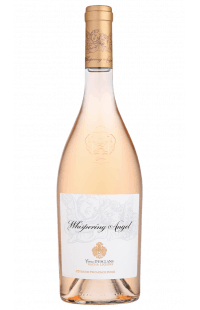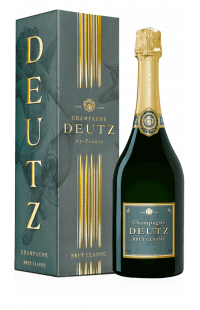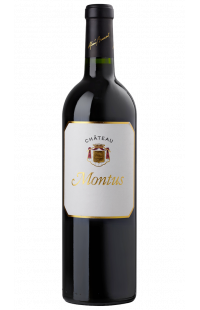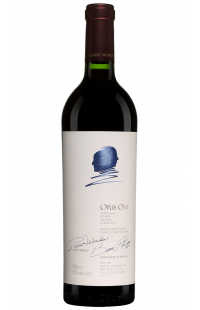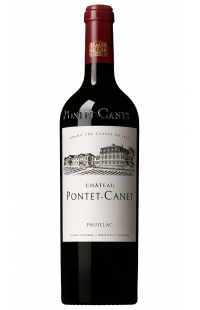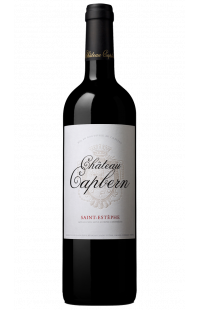- Menu
- All our wines
- Bordeaux
-
Rhône
-
Burgundy
- Rosés Wines
-
Champagne
- France
-
World
- PRIMEURS
- ORGANIC WINES
Château Capbern
Comprehensive Guide to Discovering Château Capbern: History, Terroir, and Tasting
Château Capbern, located in the prestigious Médoc region, is one of those wine treasures that combine tradition, expertise, and excellence. This vineyard, often overshadowed by its famous neighbors in Saint-Estèphe, deserves special attention for its wines that stand out for their elegance and complexity. This article aims to explore in depth the history, terroir, grape varieties, and winemaking techniques that make Château Capbern an exceptional estate.
History of Château Capbern
The Origins of the Estate
Château Capbern has its roots in the heart of the prestigious Saint-Estèphe appellation in the Médoc. Its history dates back to the 18th century, a time when the Médoc region began to make a name for itself on the international wine scene. The lands that now form the estate were then owned by several local families, all engaged in vine cultivation and wine production. These visionary winemakers were able to exploit the exceptional qualities of the Saint-Estèphe terroir to produce wines that, over the decades, gained reputation and prestige.
The Vineyard's Evolution Over the Centuries
Over the centuries, the Château Capbern estate has undergone several transformations, both in terms of its infrastructure and production techniques. Significant improvements were made to viticulture and winemaking methods as early as the 19th century, reflecting the evolution of oenological knowledge and adaptation to the growing demands of the international market. The estate has experienced periods of prosperity, but also more challenging times, particularly during the world wars that severely affected the Bordeaux region.
Iconic Owners
Château Capbern has had several owners throughout its history, each contributing to the estate's development. Among the notable figures, the Gasqueton family, also owners of the famous Château Calon-Ségur, played a crucial role in the growth and modernization of the property. Under their direction, Château Capbern not only maintained but also elevated the quality of its wines, thereby reinforcing its position on the international wine scene.
Château Capbern in the Modern Era
In the 21st century, Château Capbern continues to stand out for its commitment to quality and innovation. Today, the estate is equipped with the latest viticulture and winemaking technologies while respecting the traditions that have made it famous. Sustainable and environmentally friendly farming techniques are now at the heart of Château Capbern's approach, reflecting an increased awareness of environmental issues.
Distinctions and Recognitions
The efforts made by Château Capbern over the years have not gone unnoticed. Its wines have been regularly praised by critics and have received numerous awards at international competitions. These accolades not only testify to the consistent quality of the wines produced but also to the estate's ability to innovate while respecting the values of Bordeaux tradition.
The Terroir of Château Capbern
Geography and Climate of Saint-Estèphe
Château Capbern benefits from a privileged geographical location in the heart of the Saint-Estèphe appellation, on the left bank of the Gironde. The region's temperate climate, characterized by mild winters and hot, dry summers, creates ideal conditions for viticulture. The proximity of the Gironde estuary moderates climate variations, protecting the vines from spring frosts and summer heatwaves while ensuring slow and steady grape maturation.
Soil Composition
The soils of Saint-Estèphe, and particularly those of Château Capbern, are distinguished by their diversity and richness. They are mainly composed of gravel, pebbles, and sand mixed with clay, which give the wines a solid tannic structure and excellent aging potential. This particular composition, combined with exceptional natural drainage, allows the vine roots to draw essential nutrients from deep within, contributing to the wine's aromatic complexity.
Influence of the Terroir on the Wines
The unique terroir of Saint-Estèphe is one of the key factors that give Château Capbern its distinctive character. The gravel imparts a minerality and freshness to the wines that balance the tannic power, while the clay gives a silky texture and aromatic depth. This combination translates into elegant, complex wines with remarkable aging potential.
Environmentally Friendly Viticultural Practices
Aware of the importance of preserving its terroir, Château Capbern has adopted environmentally friendly viticultural practices. The estate favors sustainable viticulture, reducing the use of chemicals and promoting natural techniques such as vine cover cropping and biological pest control. These practices not only contribute to the health of the vines but also to the quality of the grapes, essential for the production of great wines.
The Grape Varieties of Château Capbern
Cabernet Sauvignon: King of the Grapes
Cabernet Sauvignon is the dominant grape variety at Château Capbern, as is often the case in the Médoc. This grape variety is prized for its ability to produce structured, tannic wines with exceptional aging potential. At Château Capbern, Cabernet Sauvignon brings aromas of blackcurrant, plum, and sometimes spicy notes of pepper and cedar, typical of great Bordeaux wines.
Merlot: Softness and Roundness
Merlot also plays an important role in Château Capbern's blends, where it complements Cabernet Sauvignon. This grape variety is known for its roundness and suppleness, balancing the tannic structure of Cabernet Sauvignon with softer red fruit aromas, such as cherry and raspberry, along with subtle notes of chocolate and licorice.
Petit Verdot and Cabernet Franc
Petit Verdot and Cabernet Franc, although minor, contribute their unique qualities to Château Capbern's wines. Petit Verdot adds spicy and floral touches, as well as intense color, while Cabernet Franc adds finesse and complexity with its violet and wild strawberry aromas and silky tannins.
Grape Varieties in the Blends
The blends at Château Capbern vary slightly from vintage to vintage, depending on the weather conditions and grape ripeness. However, Cabernet Sauvignon generally remains the majority grape variety, followed by Merlot, with small amounts of Petit Verdot and Cabernet Franc to fine-tune the final balance of the wine. This diversity of grape varieties allows the estate to produce harmonious, complex wines that are suitable for long aging.
Winemaking at Château Capbern
Modern Winemaking Techniques
The winemaking process at Château Capbern combines traditional techniques with modern innovations to produce top-quality wines. The harvest is done by hand, allowing for careful selection of the grapes. Once harvested, the grapes undergo cold maceration to extract aromas and color before fermentation, which takes place in temperature-controlled stainless steel tanks. This technology allows for precise temperature control, ensuring optimal fermentation and preserving the freshness of the aromas.
Aging in Oak Barrels
After fermentation, the wines are aged in oak barrels for a period of 12 to 18 months, depending on the vintage. This barrel aging process helps to refine the tannins, add complexity to the aromas, and give the wine a structure capable of aging for many years. Château Capbern uses a mix of new and second-use barrels to balance the influence of the wood with the purity of the fruit.
The Influence of Wood on Aromas and Tannins
The choice of barrel type is crucial as it directly influences the wine's aromatic profile and texture. New barrels bring aromas of vanilla, toasted bread, and sweet spices, while older barrels allow the wine to retain more pronounced fruit aromas. At Château Capbern, this balance is sought for each vintage to create wines that are both accessible when young and capable of aging gracefully.
The Role of the Oenologist in Wine Quality
The oenologist plays a central role in winemaking at Château Capbern, from the harvest to bottling. This professional is responsible for overseeing each step of the process, making key decisions regarding the duration of maceration, the choice of barrels, and the ideal time for blending the grape varieties. At Château Capbern, the oenologist works closely with the vineyard teams to ensure that each vintage best reflects the characteristics of the terroir and the estate's style.
Tasting Château Capbern Wines
Tasting Notes of the Current Vintage
The current vintage of Château Capbern stands out for its aromatic richness and balanced structure. On the nose, there are intense aromas of black fruits like blackcurrant and blackberry, complemented by notes of cedar, tobacco, and licorice. On the palate, the wine reveals a beautiful concentration with fine, velvety tannins, offering a long and harmonious finish. This wine is accessible now but will also benefit from cellaring for 10 to 15 years.
How to Open and Serve a Château Capbern Wine
To fully appreciate a Château Capbern wine, it is important to follow a few serving guidelines. It is recommended to decant the wine about an hour before tasting, especially for younger vintages, to allow aeration that will reveal the wine's full aromatic complexity. The ideal serving temperature is between 16 and 18°C. A wide red wine glass is recommended to allow the wine to express itself fully.
Food and Wine Pairings to Enhance the Tasting
Château Capbern pairs perfectly with refined dishes that will enhance its aromas and tannic structure. Among classic pairings are grilled beef fillet, roast lamb, or duck with figs. Hard cheeses like Comté or aged Gouda are also ideal companions for this wine. For the more adventurous, Château Capbern can even accompany some lightly spiced exotic dishes.
Storage and Aging of Château Capbern Wines
Château Capbern wines are designed for aging and develop complex aromas and a silky texture over time. For optimal storage, it is recommended to keep the bottles in a cellar at a constant temperature of around 12°C, away from light. Depending on the vintage, these wines can improve in the cellar for 10 to 20 years, or even longer for great years.
Buying Château Capbern
Tips for Choosing the Right Vintage
When it comes to choosing a vintage of Château Capbern, it is important to consider both the climatic conditions of the year in question and your personal taste preferences. Warmer vintages, like 2015 or 2018, often produce more opulent and fruity wines, while cooler years, like 2014 or 2017, produce wines with more marked acidity and a tighter tannic structure. A wise tip is to consult wine guides or refer to tasting notes from recognized critics to guide your choice.
Where to Buy Château Capbern?
Of course, at 12bouteilles.com. If you are looking for a particular vintage, do not hesitate to contact us. We have excellent contacts with the Château, which makes older vintages available to our clients who are looking for them.
Price Guide and Value for Money
Château Capbern offers excellent value for money, especially compared to other wines from the same appellation. Prices vary depending on the vintage and demand, but generally, they remain affordable compared to other Saint-Estèphe crus. Older vintages, having gained complexity over time, are often more expensive, but they represent a safe investment for those who appreciate aged wines.
Conclusion
Château Capbern is an estate that deserves the full attention of fine wine lovers. Its rich history, exceptional terroir, and refined wines make it an essential choice for anyone wishing to discover the diversity and quality of Bordeaux wines. Whether you are a seasoned collector or a novice looking for new discoveries, Château Capbern will seduce you with its elegance, complexity, and excellent value for money.
FAQs
What grape varieties are used in Château Capbern wines? Château Capbern mainly uses Cabernet Sauvignon, Merlot, Petit Verdot, and Cabernet Franc in its blends.
Is Château Capbern open to visitors? Yes, Château Capbern welcomes visitors for guided tours and tastings, but it is recommended to book in advance.
How long can a Château Capbern wine be stored? Château Capbern wines can be stored for 10 to 20 years depending on the vintage and storage conditions.
What are the recommended vintages of Château Capbern? The 2015, 2016, and 2018 vintages are particularly appreciated for their balance and aging potential.
Where can I buy Château Capbern online? Château Capbern is available at 12bouteilles.com.
What is the best food pairing with a Château Capbern? Château Capbern pairs perfectly with grilled red meats, lamb dishes, and aged cheeses.
